
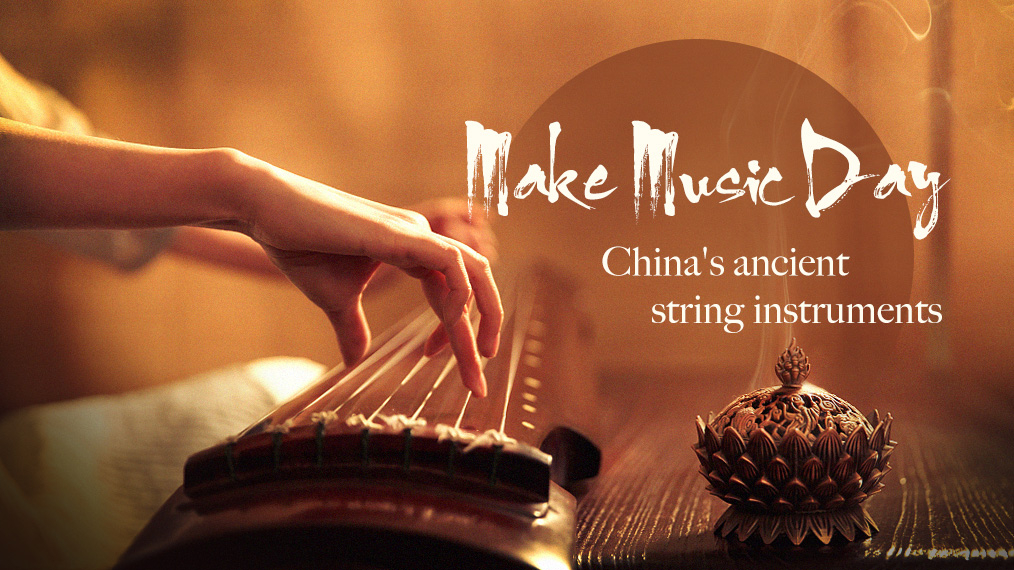
When talking about unique Chinese instruments, the guqin is one that is hard to ignore. As a part of the Chinese zither family, it has a history of more than 3,000 years. You might have also heard of the guzheng, a similar string instrument that's been around for more than 2,500 years.
On this year's Make Music Day on June 21, we explore some of these traditional Chinese instruments.
Guqin and an intimate friendship
Guqin is a seven-stringed instrument. Unlike the guzheng, which produces a louder sound, the guqin gives off a meditative ambiance with its refined and delicate timbre.
A guqin piece usually leaves many spaces between the flow of the melody, creating “the sound of no sound.”
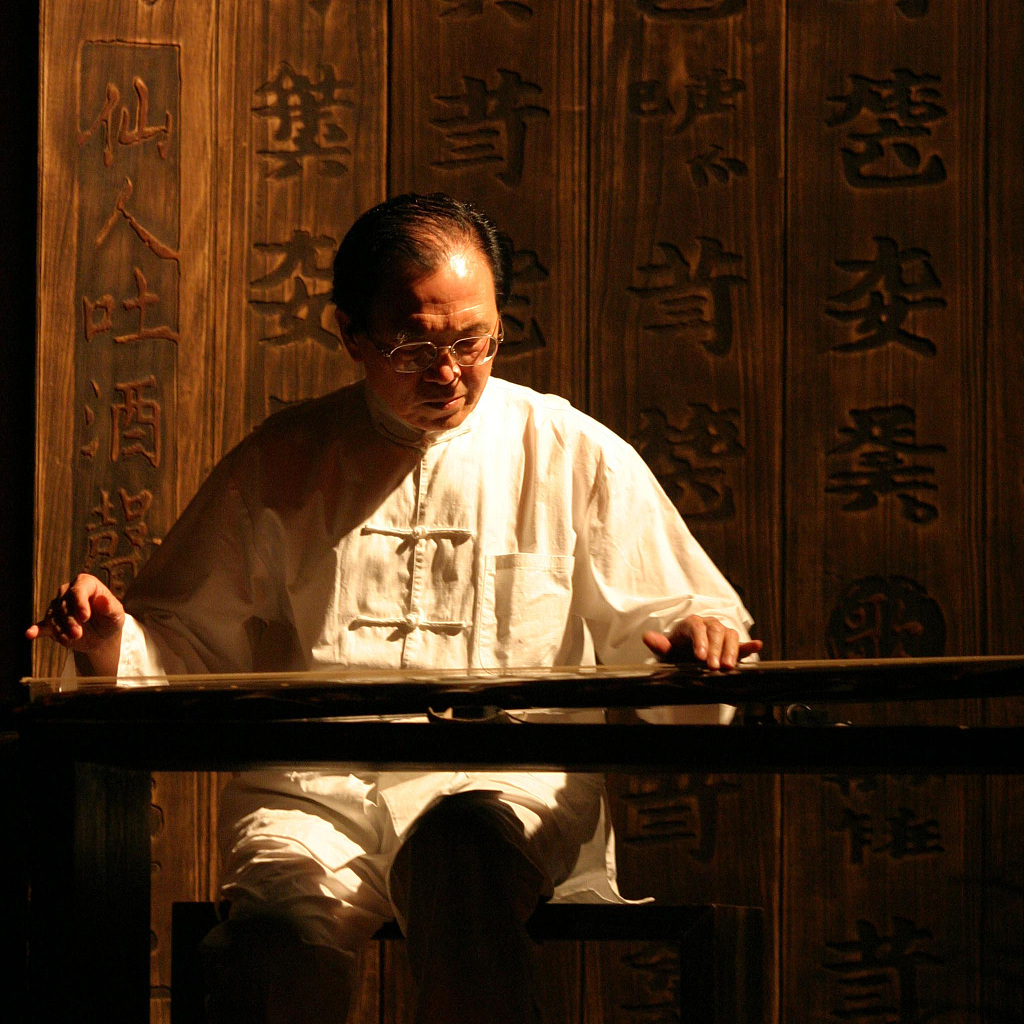
Gong Yi, a guqin master, plays on stage in Beijing, July 2005. /VCG Photo
In ancient China, the guqin was considered a highly exquisite instrument especially favored by the literati. It was also regarded as a symbol of morality, elegance, and purity.
A story about the guqin has been around for centuries in China. Taking place during the Spring and Autumn and the Warring States period (770 BC- 221 BC), court official Bo Ya and a woodman Zhong Ziqi went up into the mountains. Bo was a skilled guqin player and a composer and played the instrument while high in the mountains. Zhong exclaimed, “How skilled! It sounds like magnificent mountains!” When he played a song about the river, Zhong knew exactly what he meant and responded, "Well played! It is like the vast and torrential rivers!" Whatever Bo played, Zhong could always understand the meaning.
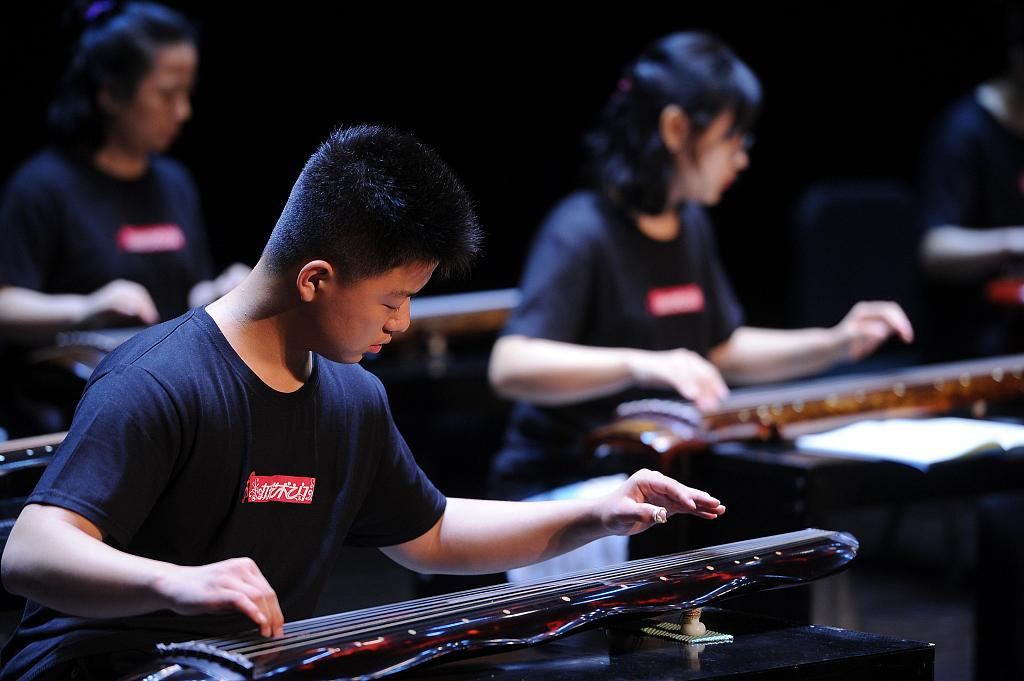
Teenagers in a summer camp practice guqin in Tianjin, July 17, 2018. /VCG Photo
After Zhong died, Bo broke his guqin and never played it again. He famously said, “Since Ziqi is gone, who should I play for?” Their story has become a tale of friendship.
The ancient song Bo played for reflecting flowing water, “Flowing Streams,” was included in NASA’s Voyager's Golden Record in 1977 to represent Chinese culture in space.
Guzheng, tender yet ablaze
The guzheng is also a member of the zither family but has 21 strings. It is bigger than the guqin and its movable bridges, which support the strings, can be used to adjust the tune.
While it's commonly known for producing gentle music, actually many songs, especially modern ones, exude a lot of energy. In "Fighting the Typhoon," or "Zhan Tai Feng" in Chinese, the guzheng vividly imitates the swirling and dreadful sound of a typhoon, creating a stirring effect for listeners.
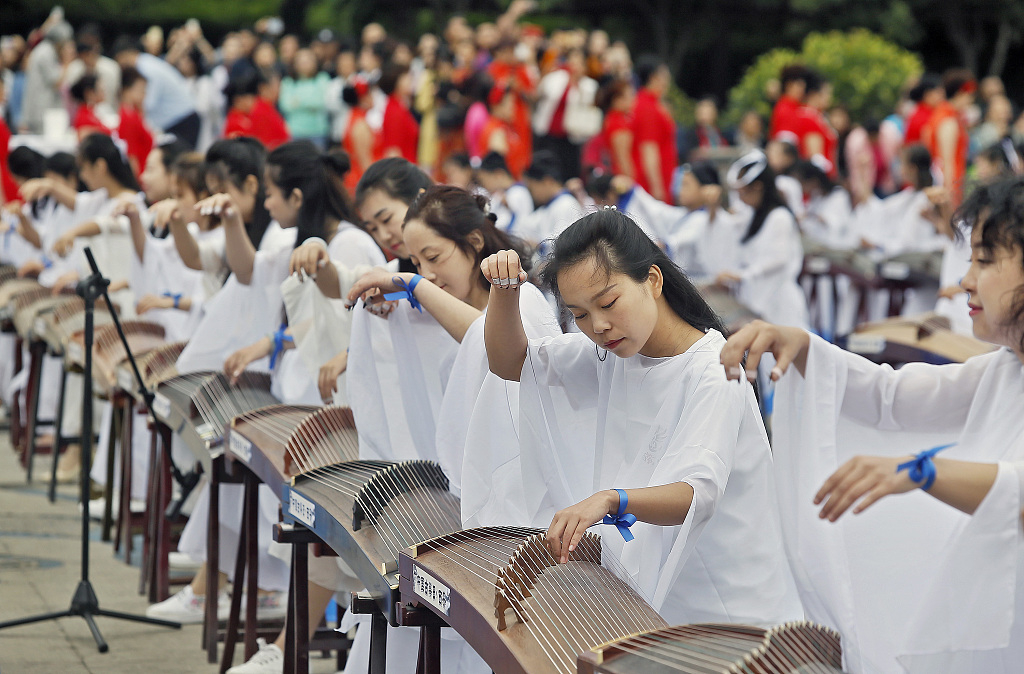
More than 300 guzheng players gather for a cultural event in Xi'an, May 20, 2018. /VCG Photo
Nowadays, the guzheng is more popular among youngsters than the guqin for its melodious and lucid tune and diverse playing methods.
Pipa, the instrument on horseback
The four-stringed plucked instrument, the pipa, first appeared during the Qin Dynasty (221 BC-207 BC). During the Northern and Southern Dynasties (420-589), the lute from central Asia was introduced to northwest China, and influenced the local pipa.
Shaped like a pear, the pipa has frets on the top. Pressing the string at a fret can give out a certain pitch. The instrument is normally played while sitting. Its size is smaller than the other two, and easy to carry during a journey, which is convenient for nomadic groups in the northwest to play while on horseback.
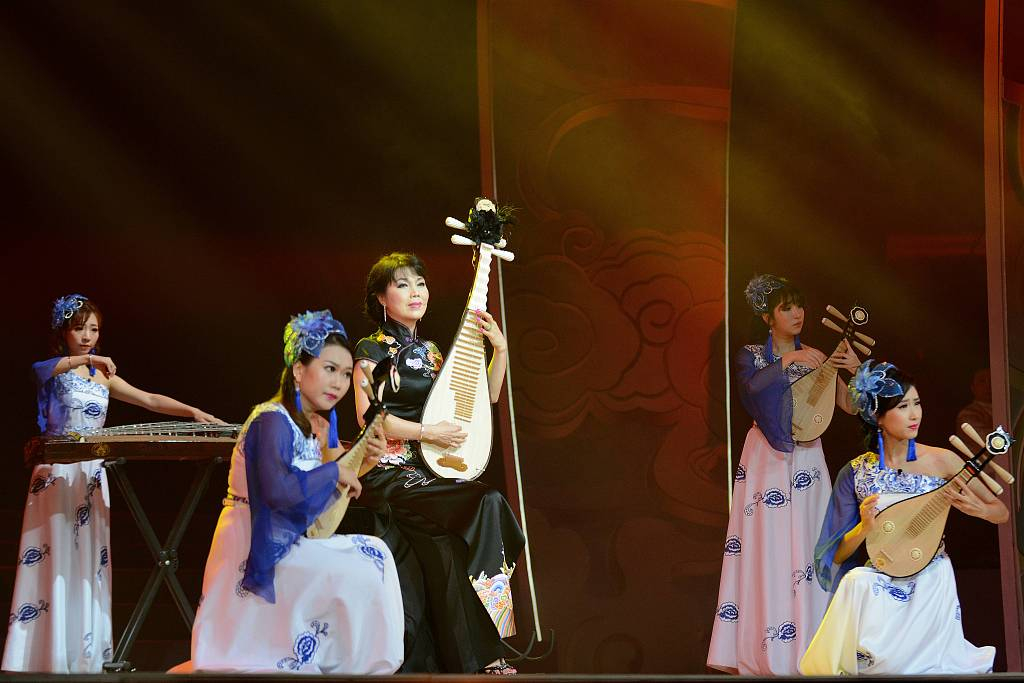
Pipa player and singer Chen Lingyu(C) performs on stage with other pipa players and a guzheng performer in Guangzhou, August 31, 2018. /VCG Photo
Neither too loud nor too quiet, the pipa has a narrative way of expression through a natural flowing timbre. Bai Juyi, a famous poet from the Tang Dynasty (618-907), once came across a pipa player playing a piece. Bai was so touched by the melody and asked about her story. She told of her miserable fall from a famous pipa musician to a lonely woman.
Her proficient pipa-playing techniques and sad story were documented in Bai's famous poem, "Pipa Xing” or “Song of a Pipa Player.” The following lines are a vivid description:
“The bold strings rattled like splatters of sudden rain,
The fine strings hummed like lovers' whispers.
Chattering and pattering, pattering and chattering,
As pearls, large and small, on a jade plate fall.”
(Video edited by Ding Zhiyang. Cover font designed by Liu Shaozhen.)

Copyright © 2018 CGTN. Beijing ICP prepared NO.16065310-3
Copyright © 2018 CGTN. Beijing ICP prepared NO.16065310-3